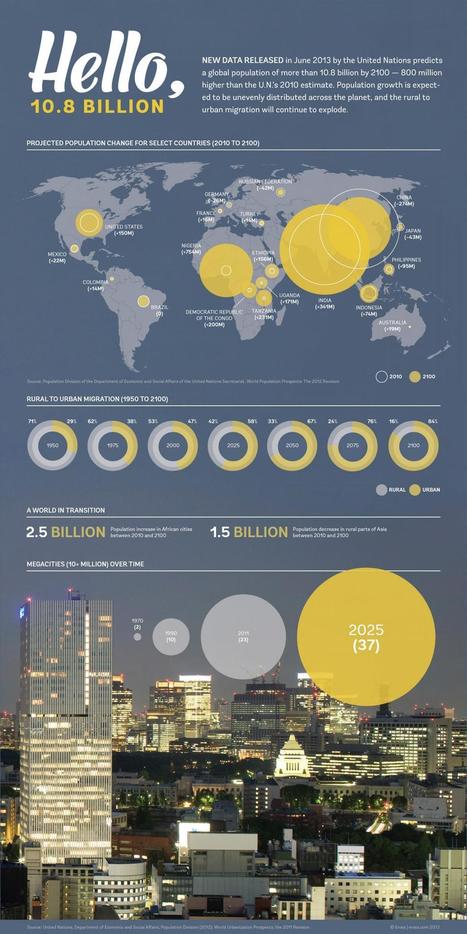Les besoins des collaborateurs ont particulièrement évolués ces dernières années ; ils ont des souhaits et besoins différents qui demandent à l’employeur de faire évoluer sa stratégie des espaces d…
Get Started for FREE
Sign up with Facebook Sign up with X
I don't have a Facebook or a X account
 Your new post is loading... Your new post is loading...
 Your new post is loading... Your new post is loading...
Brittany Ortiz's curator insight,
September 29, 2014 5:15 PM
Very interesting reading this. It seems quite true since the past winter didn't seem as cold as most winters here in Rhode Island. If the big cities cause the winter to be less cool then in the future, would winter even be cold? Lets hope and say this problem will never happen. |
Aleasha Reed's curator insight,
September 27, 2013 9:14 AM
By the year 2100 our global population is calculated to reach 10.8 billion. The United States is expected to grow another 150 million by this time. Our population right now is 313.9 million right now. Our big cities will continue to grow, and new ones will arise as the years pass. 
Lanne Marie-Christine's curator insight,
November 11, 2013 2:44 AM
La démographie, une donnée déterminante pour l'évolution du climat et la pression sur les ressources naturelles. Nous finissons hélas par être trop nombreux sur terre pour ce qu'elle peut supporter au rythme actuel...
MissPatel's curator insight,
December 17, 2014 2:09 AM
A future to look forward to? Your potential future? Good, bad or ugly? |












